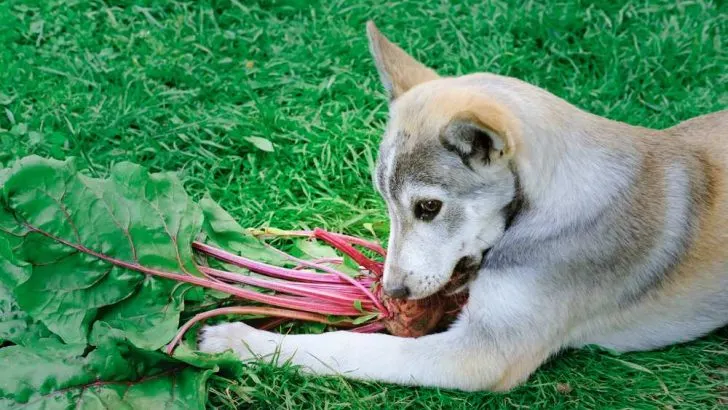Beets are great, tasty vegetables. They have many benefits for human health. Every person on earth who has struggled with iron deficiency has drunk gallons of beetroot juice (we feel for you).
Red beets can be used as a salad or added to meals – and they color the food into gorgeous purple! Preparing beets is not only good for you, but it also gives the food a certain aesthetic.
Maybe that is the reason why beetroot is such a popular food item. You love preparing it, and honestly who doesn’t? Not all veggies taste good, but beets definitely do.
So, today you’ve started cooking and the smell of beets overpowered every other scent in the kitchen. The smell of beets is great, and your dog seems to agree, too.
After a while, your pup sat by your side and looked at you with those huge, begging eyes. She wants a taste. Sometimes you give in, sometimes you don’t and today you’re just puzzled.
Can dogs eat beets? Are they safe or even healthy for the pet? Read our article for the answers to these questions, and more!
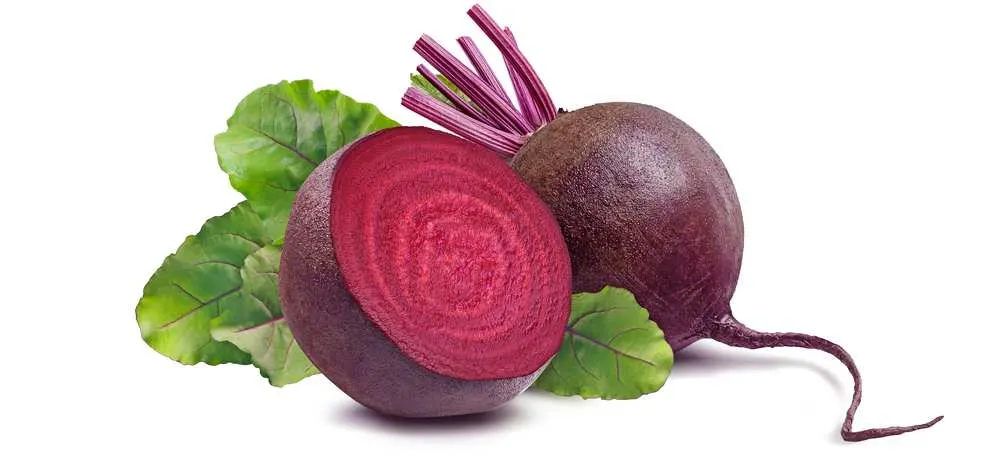
Can Dogs Eat Beets?
The awaited answer is yes, dogs can eat beets. Eating beetroot is completely safe for your pet. Of course, don’t let your pet eat too much – but eating this veggie in moderation is perfectly fine, even good for your dog.
If you want to give your dog beets somewhat regularly, make sure to introduce this food first to see how they react. Dogs can be sensitive or allergic to some foods just like humans. It’s crucial to see how they feel with just a bit of red beet before you serve them a full portion.
Dogs really can experience allergies to beetroot, so please be careful. Any unusual behavior or lethargy is a sign that your dog needs professional help!

Benefits Of Dogs Eating Beet
Let’s start by saying what beets really are. Beetroot (or beets) is a root vegetable also known as garden beet, red beet, or table beet. It’s been used for cooking for centuries now.
Beets are a great source of essential vitamins and minerals. They pack it in a low-carb nutritional value, which can be important for human and dog diets.
Let’s check out the nutritional value of ½ cup of beets – boiled, drained:
| Calories | 37.4 |
| Protein | 1.4g |
| Total Carbohydrates | 8.5g |
| Total Fat | 0.2g |
| Vitamin A | 29.IU |
| Vitamin C | 3.1mg |
| Niacin (Vitamin B3) | 0.3mg |
| Vitamin B6 | 0.1mg |
| Folate | 68.0mcg |
| Calcium | 13.6mg |
| Iron | 0.7mg |
| Magnesium | 19.6mg |
| Phosphorus | 32.3mg |
| Potassium | 259mg |
We can conclude that eating beets can be highly valuable to your pet’s health. Beets offer a variety of vitamins that your pet needs – like vitamin A, B3, B6, etc.
On the other hand, dogs don’t benefit much from the vitamin C found in fruit and vegetables. And why is that? Because dogs produce vitamin C they need – on their own!
Thankfully, your pet doesn’t need a lot of beets to thrive. The effect of introducing beets to the dog’s diet will be seen in a short while – but the dog still doesn’t require a ton of beets to get the benefits.
Let’s check out what effect beets have on your pet’s wellbeing:
| Anti-inflammatory effects: | Betanin, unique substance found in beets, reduces inflammation, arthritis, and allergies |
| Preventing cancer: | Powerful antioxidants in beetroot protect the skin from oxygen-free radicals |
| Protect the brain and liver: | Betanin, and minerals found in beets, flush out the toxins from the body and keep the brain and liver healthy |
We can safely conclude that canines certainly reap the benefits of eating beets. It’s important not to overdo it, though – with overeating comes indigestion. In the next section, we’ll cover how much beetroot is safe for your pet.
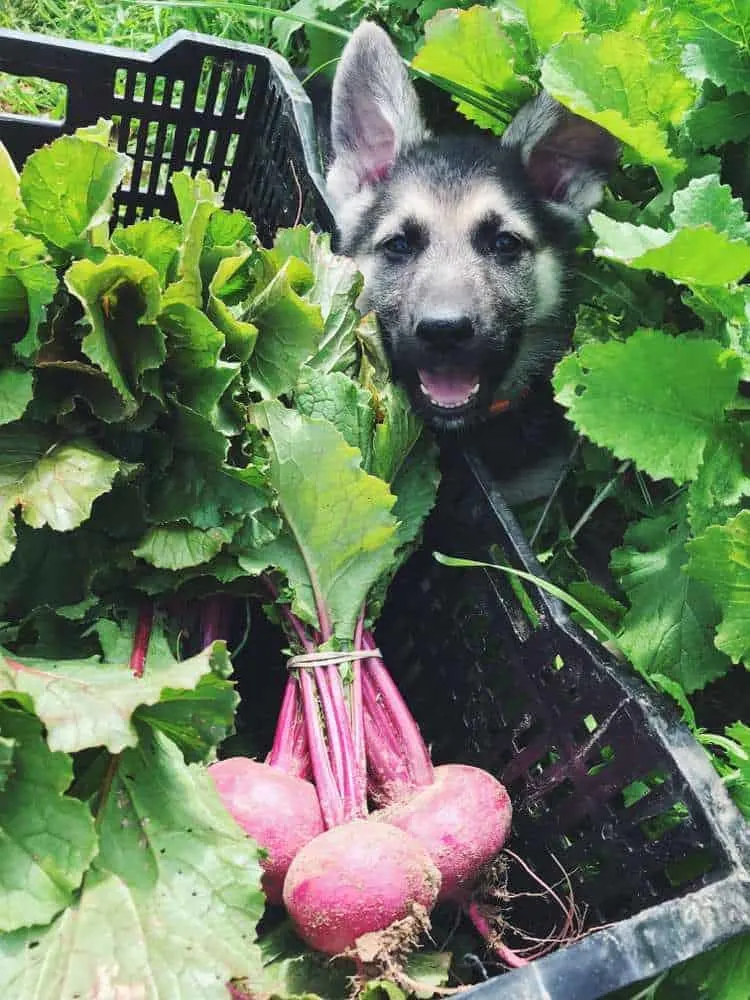
Serving Beetroot To Your Pet
Whenever you’re giving your pet something new to eat, it’s principal to introduce the food. Introducing the food is a method of gradually increasing the amount of new food – to get your dog familiarized with it. Dogs tend to be put off by something new, and the introduction of food items prevents that from happening.
The story is the same with the beetroot. If you introduced it, and if your pet seems to love it, great!
Always slice the vegetable before you serve it to your pet, without any exception. Dogs can get excited about a meal and forget to chew – and large pieces can cause choking and vomiting. Cut the red beets into tiny slices or better yet, shred them and mix them in regular dog food.
Raw Vs. Cooked Beets
Let’s talk about preparing beets for your pet. As we all know, beets require some preparation before you serve them to humans – cooking is required for this vegetable.
Can dogs eat raw beets? They can, but they don’t exactly benefit from it – cooked beets have a better nutritional value than raw beets! Moreover, it’s always the best idea to cook the beets rather than serve them raw.
Cook the beets in plain water, and don’t add salt. You can also cook them in a pan with a little oil – but not too much. Dogs tend to have a problem processing a lot of fat.
If you can’t find fresh beets in your local grocery store or supermarket, you can buy canned garden beets. Canned beetroot will provide your pet with enough nutrients, don’t worry.
Beware though – wash them with water to remove the remaining liquid. Liquid from the can contains a lot of salt!
Dogs don’t need the extra sodium in their diet, and excessive amounts of salt can lead to an illness called sodium toxicosis. Sodium toxicosis can put your beloved puppy in grave danger, so it’s best to avoid salt whenever possible.
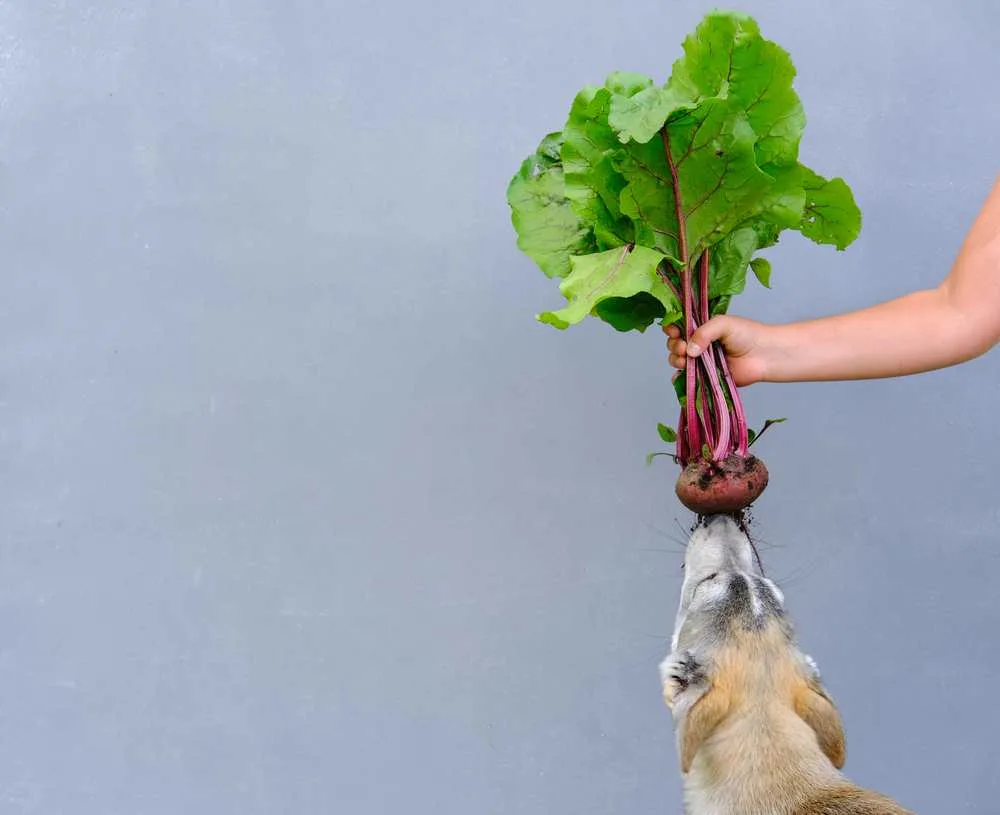
How Many Beets Can A Dog Eat?
Dogs are omnivores in nature, but their diet is different than a human diet. While humans can get away with not eating meat, dogs simply cannot. Dogs need a lot of meat daily, and some vegetables from time to time.
Whereas humans get some advantages from eating beets regularly, dogs don’t – and it can result in your dog looking, and feeling malnourished. Commercial dog food provides dogs with all the dietary requirements they have.
Some veggies like beets can be used to spice things up from time to time, but that’s it. Stick to regular dog food.
So, how many beets can your dog eat?
| Toy breeds | Small breeds | Medium breeds | Large breeds |
|---|---|---|---|
| 1 slice | 2 slices | Up to ¼ of a cup | Up to ⅓ of a cup |
Do note that this amount is for a 10-day period. Don’t overdo it, for the sake of your dog’s wellbeing.
Using Beets As A Treat
Beets can make a great, healthy treat for your furry baby. Don’t use them every day though, but they can be a special occasion type of treat.
Also, remember the 10% rule. The treats should go over 10% of the daily food ingested by the dog.
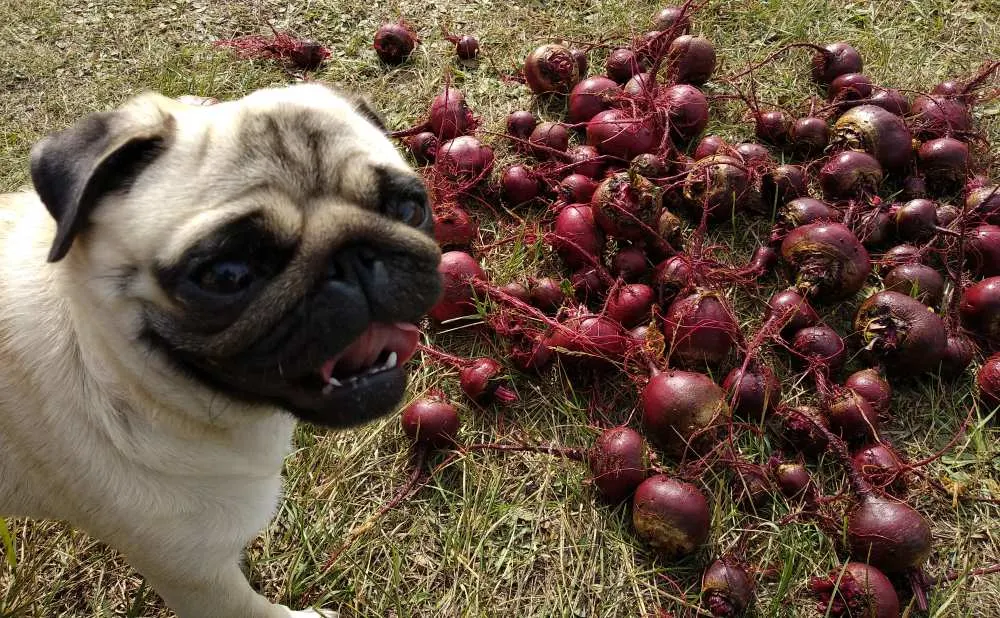
What If The Dog Eats Too Much Beetroot?
So, you cooked some beets and left them on the window to cool off before you cut them and continue preparing the food. You heard your dog whining for some, but she has eaten in less than half an hour, so you ignored it and went on your way.
Not more than a few minutes later, you saw that one full beet was missing, and your dog had red stains all over her nose. What happens to her now?
Hopefully, nothing serious – but some vomiting or diarrhea is to be expected. If the problems persist for more than two to three days, visit the veterinarian!
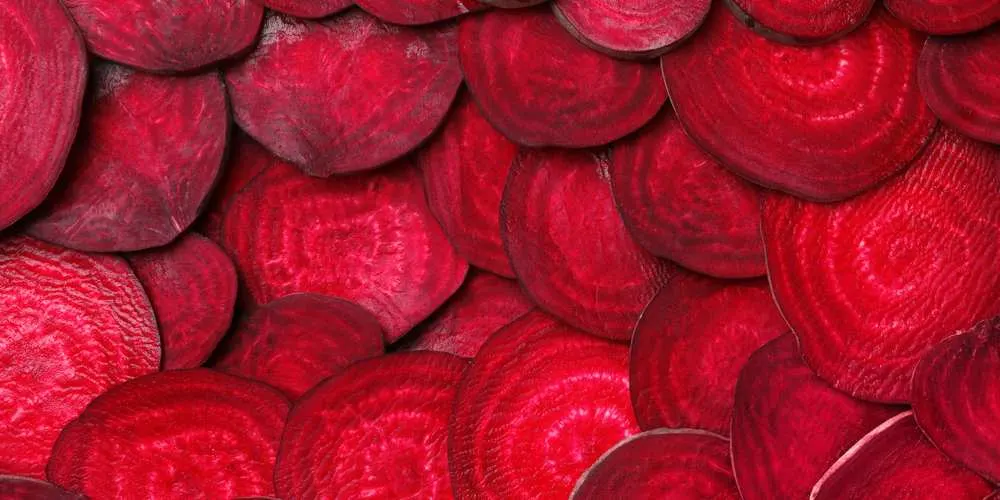
Conclusion
In this article, we have concluded that dogs can eat beets. Beetroot can be a great treat for your pet, provided the dog consumes it in moderation.
Including the beets in the dog’s diet protects the pet from cancer, fights inflammation, and keeps the liver and the brain healthy. Give your dog a beetroot according to the table above, and you should be fine.
Cooked beetroot is a better option than serving it raw – it has more nutrients this way, and raw beets can pose a risk to your pet’s health. Slice the red beet up or shred it to make it easier on the dog’s digestive system. Following these guidelines ensures that your pet will have a great time eating beets!
Learn More: What Can Dogs Eat? A Comprehensive List Of Dog-safe Foods

